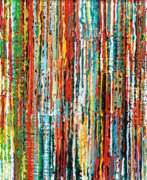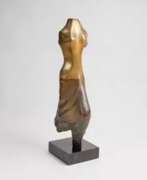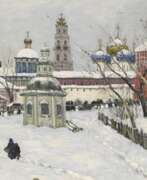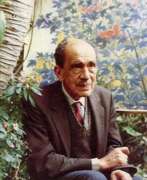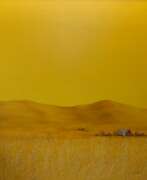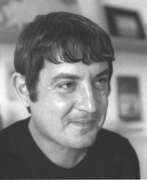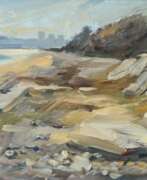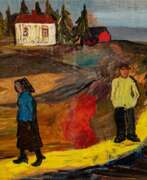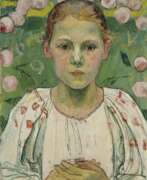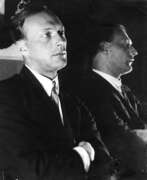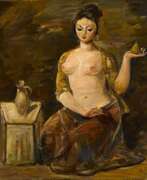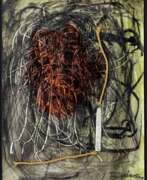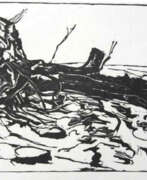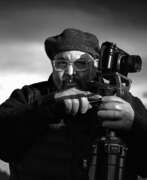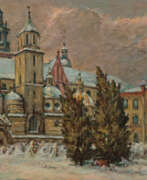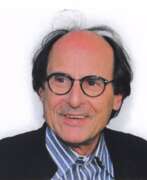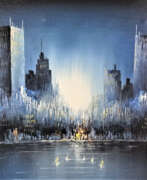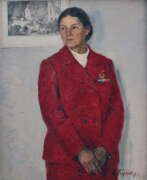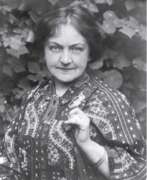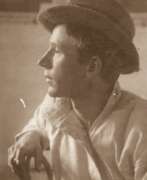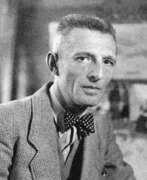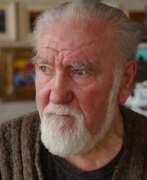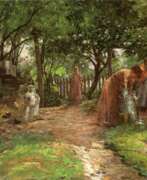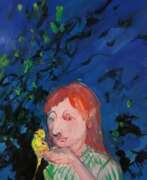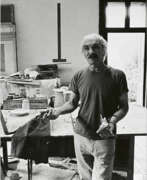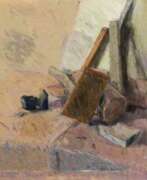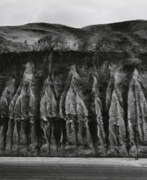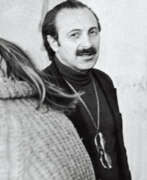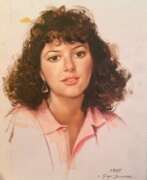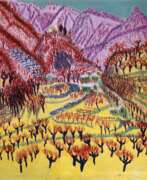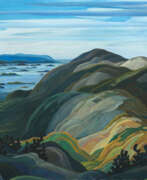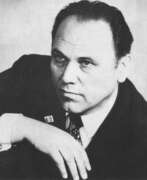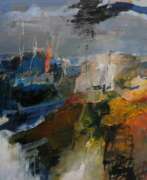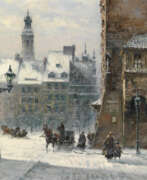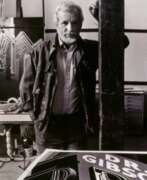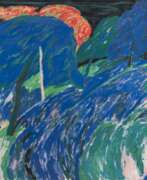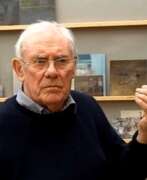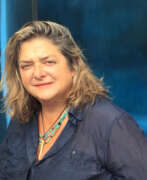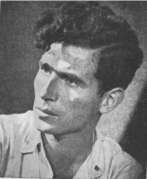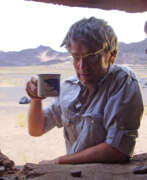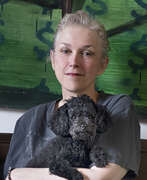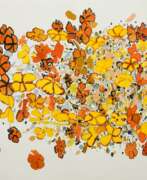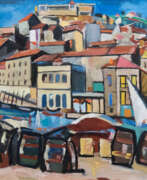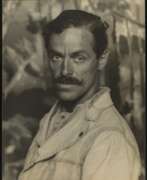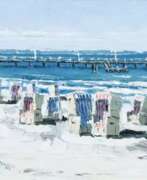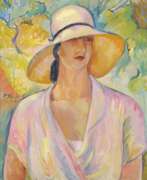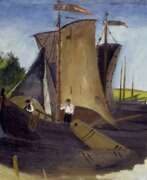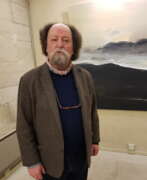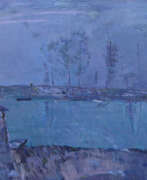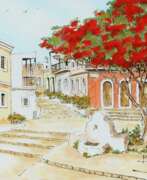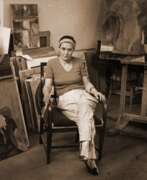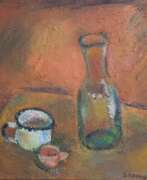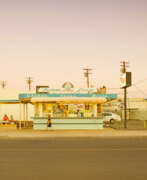Landscape painters Contemporary art
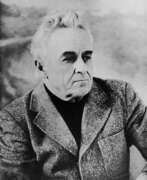

Alexander Grigorievich Maksymenko (Russian: Александр Григорьевич Максименко) was a Soviet and Ukrainian painter of the second half of the twentieth and early twenty-first centuries. He is known as a painter, graphic artist, watercolorist, and art historian.
Alexander Maksymenko worked in the genres of still life, landscape, portrait, as well as in genre painting. His genre works cover themes of collective farm life, including "Masters of the Land" and "Innovators of Collective Farm Fields". For the latter work he received the Stalin Prize. The master actively participated in exhibitions in Ukraine and abroad. His works are in the National Art Museum of Ukraine, the Museum of the History of Ukraine in World War II, as well as in other art museums and private collections.
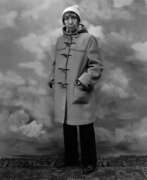

Berenice Alice Abbott was an American photographer best known for her portraits of between-the-wars 20th century cultural figures, New York City photographs of architecture and urban design of the 1930s, and science interpretation in the 1940s to 1960s.
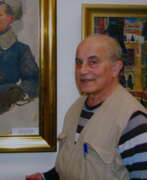

Victor Ashotovich Abramyan (Russian: Виктор Ашотович Абрамян) was a Soviet and Russian artist of the second half of the twentieth and early twenty-first centuries. He is known as a painter, a representative of the Leningrad school.
Victor Abramyan created portraits, landscapes, still lifes and genre paintings. He participated in exhibitions from the early 1970s in Leningrad. Among his famous works are "Blockade everyday life", "Still Life with a Centennial", "Leningrad. 1942. Women on Guard in the besieged city", "Young Guests" and others.
Abramyan's works are in museums and private collections in Russia and many other countries.
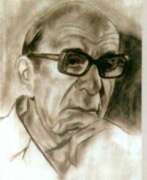

Memet Abselyamovich Abselyamov (Russian: Мемет Абселямович Абселямов) was a mid-20th century Soviet artist of Crimean Tatar origin. He is known as a landscape painter.
Memet Abselyamov became famous in 1935 with his genre painting "Kolkhoznitsy Udarnitsy", which was awarded the All-Russian prize and acquired by the Moscow Museum of Folk Art. During his life in Tajikistan, where he came after the deportation of the Crimean Tatars, the artist created mainly landscapes, including the paintings "Night in the Crimea", "Crimean Cypresses", "Gurzuf. Where A. Pushkin visited", "Sunny Day", "Spring in Tajikistan", "The Last Ray" and others.
He was a member of such creative associations as "Krymkhudozhnik", the Union of Artists of the USSR, the Union of Artists of the Tajik SSR.
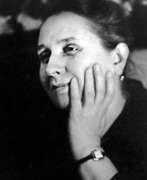

Taisia Kirillovna Afonina (Russian: Таисия Кирилловна Афонина) was a Soviet artist of the second half of the twentieth century. She is known as a painter, graphic artist, representative of the Leningrad school.
Taisia Afonina participated in exhibitions since 1940, creating portraits, landscapes, genre compositions, still lifes and etudes. At the beginning of her career she was interested in military subjects, and then delved into the genre of portraiture and lyrical landscape. Her style is characterized by tonal painting, the rendering of light and air environments and subtle coloristic combinations. In the 1980s she preferred the watercolor technique, painting flowers such as roses, daisies and tulips. Her works are in museums and private collections in Russia and other countries.
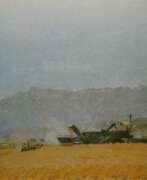

Sabyrbek Mambetsadykovich Akylbekov (Russian: Сабырбек Мамбетсадыкович Акылбеков) was a Soviet Kyrgyz artist of the mid-twentieth century. He is known as one of the first professional Kyrgyz painters in the USSR.
Sabyrbek Akylbekov became famous for his lyrical emotional landscapes. He made a significant contribution to the development of Kyrgyz fine arts through his creative, pedagogical and public activities. His works have been exhibited at many levels, including republican, all-Union and international exhibitions.
The master's works can be found in the Kyrgyz National Museum of Fine Arts named after G. Aitiev, the State Tretyakov Gallery and in museums of the CIS countries.
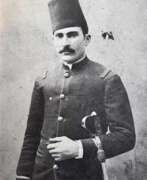

Abdul Qadir Al Rassam was an Iraqi painter of the first half of the twentieth century. He is known as a painter and graphic artist and is considered the founder of modern Iraqi painting.
Al Rassam, a military officer by training, studied drawing at the Military College in Istanbul. Returning to Iraq, he created landscapes, portraits and murals. His work is characterized by historical and ethnographic accuracy. The master, according to critics, contributed to the influence of the European academic school on the Iraqi art scene.
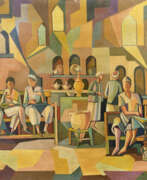

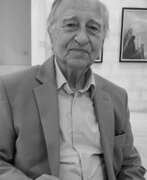

Saad Al-Tai is a contemporary Iraqi artist. He participated in several exhibitions in Baghdad and abroad. Al-Tai was a member of the Iraqi Impressionists Group. Despite the name of the group, Al-Tai was not categorically an impressionist, rather his style lent more towards cubist realism. For him, the colour of the painting was determined by its subject matter. Al-Tai is an award winning artist who, amongst other things, received Italian knighthood in 2005 in recognition for his efforts in fostering Iraqi-Italian cultural dialogue including founding and heading the Italian Language Department in 2002 at the College of Languages, Baghdad University.
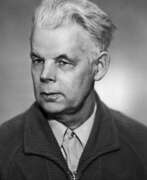

Pyotr Filippovich Alberti (Russian: Пётр Филиппович Альберти) was a Soviet and Russian artist of the second half of the twentieth century. He is known as a painter, a representative of the Leningrad school.
Pyotr Alberti created portraits, landscapes, genre paintings. He actively exhibited since 1951 in Leningrad, demonstrating his works along with the masters of his time. The artist had a broad writing and bright coloring, expressive stroke and used various techniques. He paid special attention to the study of nature. In the late period of his career, he became fond of still life paintings with favorite motifs such as peonies and watermelons.
Alberti's works are preserved in museums and collections around the world.
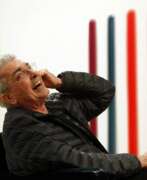

Peter Alexander was an American artist who was part of the Light and Space artistic movement in southern California in the 1960s. He is notable for his resin sculptures from the 1960s and 1970s. He studied architecture in England before receiving both his BFA and MFA from the University of California, Los Angeles. Alexander started as an architect, before developing a reputation in the 1960s for creating his sculptures.
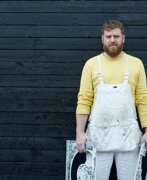

Darren James Almond is an English artist, based in London. He was nominated for the 2005 Turner Prize. He works in a variety of media including photography and film, which he uses to explore the effects of time on the individual.[3] He uses "sculpture, film and photography to produce work that harnesses the symbolic and emotional potential of objects, places and situations, producing works which have universal as well as personal resonances"
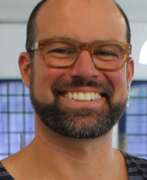

Luis M. Alonzo-Barkigia is a contemporary Mexican artist. He studied at the Malmö Academy of Art (Sweden) and at the University of Illinois at Chicago. He was awarded the UIC Presidential Fellowship, the Larsen Fellowship for Studio Arts.


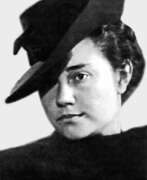

Evgenia Petrovna Antipova (Russian: Евгения Петровна Антипова) was a notable Russian painter, graphic artist, and art teacher. She stood out for her genre compositions, portraits, landscapes, and still lifes, primarily utilizing oils and watercolors. Evgenia Antipova's works often depicted apple orchards and Crimean landscapes, showcasing her profound connection to nature and her ability to capture its essence.
Evgenia Antipova's education at the prestigious Repin Institute of Arts shaped her artistic journey, leading to a career enriched with personal exhibitions and a significant presence in the art community. Not only did her artworks gain recognition in Russia, but they also found their way into international collections and exhibitions, notably in France, Germany, the United States, and the United Kingdom.
Throughout her career,Evgenia Antipova was an active participant in various significant exhibitions, displaying her works alongside other renowned artists. Her contributions to the art world were recognized with personal exhibitions in Saint Petersburg and inclusion in art auctions and exhibitions abroad.
Evgenia Antipova's paintings are part of prestigious collections, including the State Russian Museum, and continue to be celebrated in art museums and private collections globally. Her legacy as a prominent figure in the Leningrad School of painting endures, captivating art enthusiasts and collectors with her vivid and emotionally resonant works.
For those interested in Russian art, particularly the Leningrad School of painting, Evgenia Petrovna Antipova's oeuvre offers a rich exploration of genre compositions and landscapes, reflecting the artistic vibrancy of her era. Collectors and art experts are encouraged to delve into her works and consider signing up for updates on exhibitions and sales featuring her paintings.
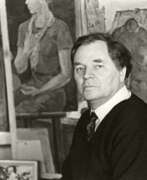

Fyodor Vasilievich Antonov (Russian: Фёдор Васильевич Антонов) was a Soviet and Russian artist of the twentieth century. He is known as a painter, graphic artist, textile artist, teacher, and professor.
Fyodor Antonov created landscapes, portraits and thematic compositions. In his genre works he immortalized the life and life of Soviet youth, as well as the formation of industry in the USSR. During the Great Patriotic War, the artist created portraits of heroes, as well as posters with a simple and direct pictorial form. Antonov's works are in various museum collections, including the Tretyakov Gallery, the Russian Museum and many private collections.


Pyotr Yakovlevich Anurin (Russian: Петр Яковлевич Анурин) was a Soviet and Russian artist of the second half of the twentieth century. He is known as a painter, author of lyrical landscapes, often depicting the architecture of ancient Russian cities.
Pyotr Anurin was nicknamed "spring artist" by his contemporaries for his subject matter, style and technique of painting. Spring was a special time for the master, during this period he created many canvases, such as "Spring", "The Last Snow" and others. The main theme of his works in the last years of his life was the Central Russian landscape.
The artist's works are in various art galleries and private collections in many countries, including Russia, England, Germany, France, Israel and China.
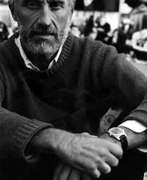

Ugo Attardi was an Italian painter, sculptor and writer. Attardi moved from Genoa to Rome in the early 1950s, where he formed the group Forma 1 together with other artists. His sculpture of Ulysses is now permanently installed in Battery Park in New York
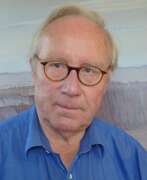

Gerhard Ausborn was a German painter. He studied painting at the Hamburg University of Fine Arts.
Landscapes, ancient sites and modern cities characterise the subject of Gerhard Ausborn's paintings. In parallel, he creates abstract compositions without objects.
The paintings are inspired by impressions the artist gathered during his numerous journeys to many countries around the world. The paintings were not created on location, but always afterwards in his Hamburg studio. They are not intended to be an exact copy of reality, but rather, in memory, what is seen is reduced to the essentials and combined with the artist's own ideas, sensations and experiences.
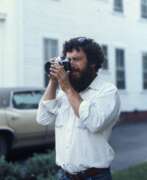

John Baeder is an American painter closely associated with the photorealist movement. He is best known for his detailed paintings of American roadside diners and eateries. His interest in small towns across America began when he was young by photographing old cars and other relics. He started working as an art director in Atlanta for a branch of a New York advertising agency in 1960, and subsequently moved to New York City in 1964. He went on to have a successful career in advertising through the early 1970s, while continuing to paint, draw and photograph on his own time. Baeder left the advertising field in 1972 to pursue his artistic career full-time. The same year, OK Harris Gallery in New York began exhibiting his artworks. Since then, he has had more than thirty solo exhibitions at art galleries. His work includes oil paintings, watercolors and photographs. Baeder’s work aims to chronicle the disappearing aspects of American culture. Baeder is the recipient of the Tennessee Governor's Distinguished Artist Award in 2009.
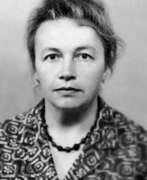

Irina Mikhailovna Baldina (Russian: Ирина Михайловна Балдина) was a Soviet and Russian artist of the second half of the twentieth and early twenty-first centuries. She is known as a painter, a representative of the Leningrad school.
Irina Baldina participated in exhibitions in Leningrad since 1952. Her work covered a variety of genres, including portraits, landscapes, still lifes and genre compositions. From 1960 to 1980, her works were characterized by themes of modernity, nature and people of Zaonezhye. Her style was characterized by broad brushstrokes, decorative and mastery in conveying the colors of northern nature.
Her works are in museums and private collections all over the world, including Russia, France, USA, Japan and other countries.
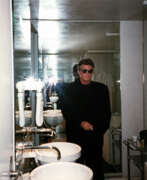

Lewis "Duke" Baltz was an American visual artist, photographer, and educator. He was an important figure in the New Topographics movement of the late 1970s. His best known work was monochrome photography of suburban landscapes and industrial parks which highlighted his commentary of void within the "American Dream". His work is focused on searching for beauty in desolation and destruction. Baltz's images describe the architecture of the human landscape: offices, factories and parking lots. His pictures are the reflection of control, power, and influenced by and over human beings. His books and exhibitions, his "topographic work", such as The New Industrial Parks, Nevada, San Quentin Point, Candlestick Point, expose the crisis of technology and define both objectivity and the role of the artist in photographs. He wrote for many journals, and contributed regularly to L'Architecture d'Aujourd'hui. Baltz's work is held in the collections of the Solomon R. Guggenheim Museum, Metropolitan Museum of Art, Tate Modern, Los Angeles County Museum of Art, Whitney Museum of American Art etc.
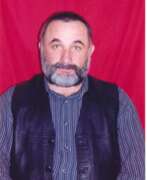

Issa Abasovich Barkhanoyev (Russian: Исса Абасович Барханоев) was a Soviet and Russian Ingush artist of the last quarter of the twentieth and early twenty-first centuries. He is known as a painter, draughtsman, landscape painter, genre painter and poet, a self-taught artist.
Issa Barkhanoyev created more than 500 paintings during his career, in which, according to critics, he skillfully conveyed his deep thoughts and feelings through images and symbols, and these works of art epitomize spirituality and life philosophy. The works of the folk artist are in museums of the Republic of Ingushetia and private collections.


Mike Bayne is a contemporary Canadian artist creates miniature Photorealist paintings of overlooked North American scenes, frequently of his childhood town. Capturing every detail from his working photographs, he replicates his subject not only in terms of imagery, but often also in scale, by mimicking the size of actual commercially printed photographs. His depictions of architecture and vehicles render environments locked in a moment of time, devoid of people and movement. Visually, his works are at once abruptly realistic, and yet purposefully inorganic. He received his MFA from Concordia University and has participated in many group shows across the U.S. and Canada. His work is in the collection of the National Gallery of Canada, the Art Gallery of Ontario, the Nerman Museum etc. Bayne was also the recipient of the Kingston Prize for Portraiture in 2011.
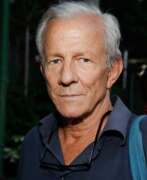

Peter Hill Beard was an American artist, photographer, diarist, and writer who lived and worked in New York City, Montauk and Kenya. His photographs of Africa, African animals and the journals that often integrated his photographs, have been widely shown and published since the 1960s.


Victoria Markovna Belakovskaya (Russian: Виктория Марковна Белаковская) was a Russian Soviet artist of the mid-twentieth century. She is known as a painter, graphic artist and representative of the Leningrad school of painting.
Victoria Belakovskaya participated in exhibitions of Leningrad artists since the early 1930s. Her work covers various genres, including portraits, genre compositions, still lifes and landscapes. Her famous works include "Pioneer Girl" (1931), "Self-Portrait with a Cigarette" (1936), "Leningrad Landscape" (1953), "Spring Flowers. Still Life" (1961), a series of landscapes of Altai, Crimea, Kiev and others.
Works by the artist are in the collections of museums in Russia, Great Britain, USA, France and other countries.
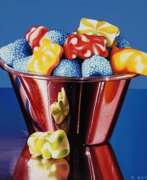

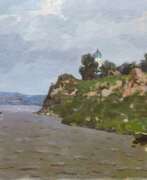

Yakov Tarasovich Besperstov (Russian: Яков Тарасович Бесперстов) was a Russian Soviet artist of the second half of the twentieth century. He is known as a painter, muralist, representative of the Leningrad school of painting.
At the initial stage of his career, Yakov Besperstov worked in the field of monumental and decorative painting, participating in the painting of various buildings. Later he moved to easel painting, creating portraits, genre paintings, as well as urban landscapes. His works were exhibited at exhibitions from the late 1950s and were appreciated by leading artists of Leningrad. The master traveled extensively throughout various regions of Russia and other countries, including France.
His works are in museums and private collections in various countries, including Russia, France, Belgium, Germany, Spain and Italy.
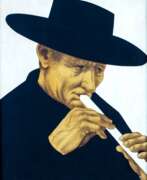

Arne Besser is a contemporary American artist. He received training as an artist at the Art Center School, Los Angeles. There he studied with John Audubon Tyler and Lorser Feidelsson. Beser’s approach to Photo-Realism is to draw from the urban landscape and nature a succinct “set like” image of reality. His city scenes depict New York street life alive with trading and traders, prostitutes and junkies looking for a fix. These visual images iconify the underside of urban life in a way that elevates this point of view to an almost mythic level.
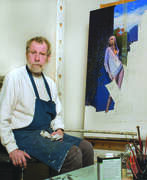

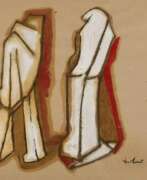

Otmar Blaser is a contemporary German artist. In 1967 he studied at the Werkkunstschule with Prof. Holweck. In 1968 he traveled through Europe, the Middle East, Canada and America. From 1970-1976 he studied at the University of the Arts in Berlin. In 1975 he was a master's student with Professor Bachmann, in 1976 he was an assistant to Professor Kapitsky at the Institute of Visual Communication and Design. In 1977 he was a lecturer at the Volkshochschule Berlin-Neukölln, collaborating freelance with the Theatertreffen Berlin.
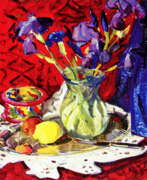

Moses Abramovich Blank (Russian: Моисей Абрамович Бланк) was a Ukrainian Soviet artist of the mid-twentieth century. He is known as a painter and graphic artist, distinguished for his still lifes and landscapes.
Moses Blank actively participated in art exhibitions, including national, all-Union and international exhibitions, beginning in 1927. He used various artistic techniques including lithography, etching, ink, watercolor, gouache, pastel, and sometimes oil. During the Great Patriotic War he voluntarily went to the front, after the war he served as an artist in the Air Defense Corps in Riga. The master left a noticeable trace in the history of art in Ukraine.
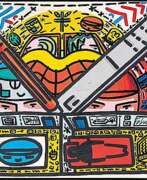

Francois Boisrond is a contemporary French painter. He studied from 1977 to 1980 at the National School of decorative Arts. In 1981 he became involved in the Free Figuration movement. Inspired by visual products (advertising products, posters, stickers, video games etc.), cartoon characters, and by using acrylic paint, Francois Boisrond’s works are colourful, figurative and enigmatic, and his simplified shapes are often outlined in black. He portrays mainly characters, frequently symbolic in everyday situations, but he also depicts urban, maritime or rural landscapes. Besides this Boisrond creates humanitarian and publicity posters. Since the 1990’s the artist has become interested in an imaginary public and the everyday life that invades each and every one of us.
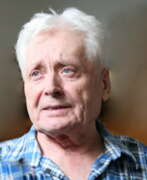

Vasily Pavlovich Borisenkov (Russian: Василий Павлович Борисенков) was a Soviet and Russian artist of the second half of the twentieth and early twenty-first centuries. He is known as a painter and teacher, a representative of the Leningrad school of painting.
Vasily Borisenkov actively participated in Leningrad art exhibitions since 1954, was the author of genre and battle paintings, landscapes and portraits. Among his famous works are the paintings "Difficult Conversation", "Spring", "Strelna. The Beginning of Summer" and many others. The master's works are in museums and private collections both in Russia and abroad.
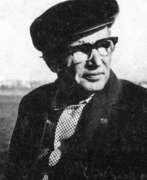

Nikolay Stepanovich Borovsky (Russian: Николай Степанович Боровский) was a Soviet Ukrainian artist of the second half of the twentieth century. He is known as a painter and teacher.
Nikolay Borovsky became famous for his portraits, landscapes and still lifes, as well as genre paintings. Some of his works were characterized by extraordinary realism. Since the early 1960s, he actively exhibited his works and in 1964 joined the Union of Artists of the USSR. For his painting "Worker. Year 1928" he received the prize of the Union of Artists of the Ukrainian SSR.
The master created a significant number of works that are in private and public collections, including a gallery of portraits of participants in the defense and liberation of Dnepropetrovsk.
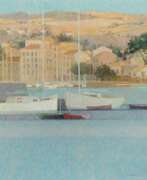

André Bourrié, full name André Georges Jules Louis Bourrié, was a French painter.
He was known for his city and seascapes, which used oil paint, sometimes mixed with chalk and sand to create a textural effect on the canvas.
Bourrier's work has been exhibited in galleries and museums around the world, including the Centre Pompidou in Paris and the Galleria Bohemia in New York.
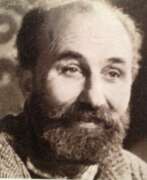

Eduard Georgievich Bragovsky (Russian: Эдуард Георгиевич Браговский) was a Soviet and Russian artist of the second half of the twentieth and early twenty-first centuries. He is known as a painter who specialized in the genres of landscape, portrait and still life.
Eduard Bragovsky closely connected his creative destiny with the Russian town of Tarusa, where he lived for several years. He painted many paintings, creating a "portrait" of the town. The artist actively traveled around the country, creating works from nature. His works were exhibited in various museums in Russia, the CIS and other countries, as well as at personal exhibitions in different parts of the world.
He actively participated in the work of the Moscow Union of Artists, was a member of the Board, headed the painting section.


Herbert Brandl is one of the most famous Austrian expressionist artists. He achieved success through his large-format works.
Landscape as a theme was always dominant in his work, where pictorial abstraction and subjectivity alternate. Since the beginning of the new millennium, Brandl's passion for the monumentality of mountain landscapes has become increasingly evident. Using various formats and techniques, the artist has reinterpreted the theme of mountains, playing with expressive gestures, abstract colour spaces and massive forms.


Yves Brayer was a French painter and lithographer known for his landscapes, portraits and still lifes.
Brayer studied at the École Nationale Supérieure des Beaux-Arts in Paris and then in Rome. He was influenced by classical art and inspired by Mediterranean landscapes, which he often depicted in his paintings. He was also interested in the culture of ancient Greece, which influenced his work.
Brye's early work was inspired by the Cubist and Surrealist movements. He was a founding member of the Paris School, a group of artists working in the French capital in the mid-twentieth century. He was also a member of the French Academy of Fine Arts and a Knight of the Legion of Honour.
Bryeux's work has been exhibited in prestigious galleries and museums around the world, including the Louvre in Paris, the Museum of Modern Art in New York and the National Museum of Western Art in Tokyo. His paintings are in many private collections.
Over the course of his career, Brye has received numerous awards and honours, including the Grand Prix de Rome and the Prix de l'Institut de France. He is considered one of the most important French artists of the 20th century.
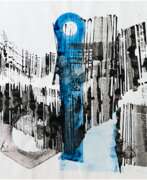

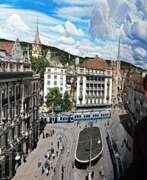

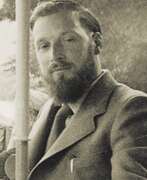

Lionel Victor Bulmer was an English impressionist painter, a member of the New English Art Club, founded in 1886 as an exhibition society dedicated to promoting the avant-garde technique of French impressionist painting, the influence of which was clearly evident in Bulmer's own work.
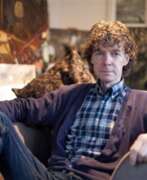

Gary Bunt is a British self-taught artist known for his paintings of the English suburbs and countryside. He took up art to overcome a serious illness. Gary Bunt in a primitive style, with sophisticated simplicity and good humor depicts ordinary life with its simple joys.


Volker Bußmann is a contemporary German artist known for his diverse and eclectic body of work. He explores various artistic genres, including landscape and figure painting, op-art, and printmaking. His artistry demonstrates a wide range of influences and styles, making him a versatile and dynamic artist. Bußmann's work may incorporate a combination of traditional and contemporary elements.
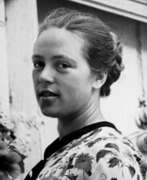

Zlata Nikolaevna Byzova (Russian: Злата Николаевна Бызова) was a Soviet and Russian artist of the second half of the twentieth and early twenty-first centuries. She is known as a painter, a representative of the Leningrad school, famous for her genre compositions, portraits, landscapes and studies from life.
Zlata Byzova achieved particular success in provincial portrait-types and Old Ladoga sketches of the 1960s-1970s. Her works were successfully presented at exhibitions and auctions of Russian painting in France in 1989-1992.
The artist's works are in museums and private collections in Russia, Finland, Germany, France and other countries.


Harry Callahan was an American photographer and artist who is best known for his innovative and experimental work in the mid-20th century. He was began his artistic career as a painter before turning to photography.
Callahan's photographic work was characterized by his interest in abstraction, pattern, and form. He often photographed everyday objects and scenes, such as street signs, buildings, and landscapes, and used his camera to explore the beauty and complexity of the world around him.
Callahan was also known for his work as a teacher, and he taught photography at the Rhode Island School of Design for many years. His students included notable photographers such as Aaron Siskind and Ray K. Metzker, and he was known for his rigorous and challenging approach to teaching.
Callahan's legacy as an artist and photographer continues to influence contemporary photography and art. His innovative techniques and distinctive style continue to inspire new generations of artists, and his work is recognized as a significant contribution to the history of photography.


Leonid Ivanovich Chernov (Russian: Леонид Иванович Чернов) was a Soviet Ukrainian artist of the second half of the twentieth century. He is known as a painter, graphic artist and teacher.
Leonid Chernov created in various genres, including landscape, still life and genre painting. He has participated in numerous exhibitions since 1945. His work was inspired by business trips to India, Afghanistan, Bulgaria and Cuba. Notable works include cycles of landscapes "Across Ukraine", etchings "In Folk Bulgaria", drawings dedicated to Ukrainian folk songs and poems by Soviet poets.
Chernov nurtured a galaxy of Ukrainian artists and played an important role in the development of the Ukrainian art community.
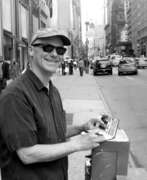

Tom Christopher is an American painter known for his New York City urban paintings and murals. Most of the work is painted using small-batch, handmade acrylic paint. Pencil lines from the initial exploratory sketch stage often remain on the white canvass. His typical images include cabbies, delivery men, skylines, and chaotic city scenes. His work is usually done with acrylic paint in an expressionist style. Christopher began as a commercial artist, and has become a painter with worldwide galleries and exhibitions. He has also experimented with collage-style paintings and silkscreens that utilize multiple images and layers.
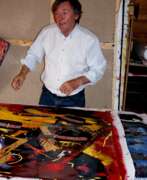

Christian Clerebout is a French contemporary artist. He spent his childhood in Africa, which has left an indelible imprint in his painting style. He studied art from 1966 until 1979 in Paris and Rome. Before settling indefinitely in Brittany, he ran away to North America, lured by the United States, and New York, in particular. This is where his powerful cityscapes evolved: engorged with sweeping movement, brilliant colors and intense darks and lights. He has expanded creatively to include such subject matters as orchestras, airports, elephants and financial themes, but his expressive style is always recognizable.
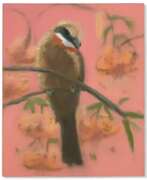

Ann Craven is a contemporary American painter known for her lush depictions of the moon, birds, and multi-colored stripes. Craven’s use of serial motifs belies her interest in ephemeral moments, seasonal cycles, and the changeable qualities of painting. She received her BFA from the Massachusetts College of Art in 1986 and her MFA from Columbia University in 1993. She notably served as an artist assistant to Alex Katz, whose work influenced her own. Much of Craven’s practice revolves around painting en plein air, in this way she has captured the moon on hundreds of nights over the years. The artist currently lives and works in New York. Today, her works are held in the collections of the Whitney Museum of American Art in New York, the Museum of Contemporary Art in Chicago, and the Institute of Contemporary Art in Miami, among others.
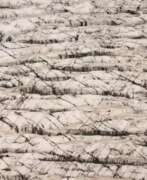

Ulrike Crespo is a German photographer, psychologist and philanthropist. She grew up in Darmstadt and, after training as a hotel manager, studied French, art history and archeology in Lausanne and Geneva. In 1980 she moved to Frankfurt am Main and taught German for foreigners there. From 1985 to 1990 she studied psychology and, having received a license to practice medicine, worked as a psychotherapist, and then in the psychosomatic department of the university clinic of the Johann Wolfgang Goethe University. In 1995 she opened her own practice. In 1998, as a co-heir of Wella, she founded the Crespo Chamber Music Foundation, in 2004 she founded another foundation, the Crespo Foundation, which promotes educational projects. Donated most of the proceeds from the sale of the family-owned Wella Group. With her funds, she supports people who are in unfavorable starting conditions, but want to build their own career.
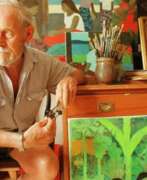

Ray Austin Crooke was an Australian artist known for for serene views of Islander people and ocean landscapes, many of which are based on the art of Paul Gauguin. He won the Archibald Prize in 1969 with a portrait of George Johnston. His painting The Offering (1971) is in the Vatican Museum collection. Many of his works are in Australian galleries. He was made a Member of the Order of Australia in the 1993 Australia Day Honours, "in recognition of service to the arts, particularly as a landscape artist".
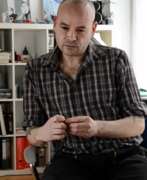

Georg Dinz is a contemporary Austrian artist. After studying at the Vienna University of Applied Arts, Dienz lives and works as a room and stage designer in the Viennese punk scene. Shortly after the fall of the Wall, Dienz moves to Berlin, where he takes part in various art projects in the wild post-reunification period. Today he concentrates on free painting in his studio in the former Berlin artist district of Prenzlauer Berg. Georg Dienz's works are stylistically characterized by a flat and clear application of paint and can be described as "reduced realism".
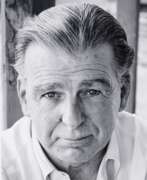

Sir William Dobell was an Australian portrait and landscape artist of the 20th century. Dobell won the Archibald Prize, Australia's premier award for portrait artists on three occasions. The Dobell Prize is named in his honour.
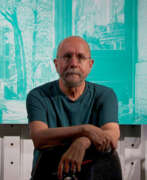

Don Eddy is a contemporary representational painter. He gained recognition in American art around 1970 amid a group of artists that critics and dealers identified as Photorealists or Hyperrealists, based on their work's high degree of verisimilitude and use of photography as a resource material. Eddy has worked in cycles, which treat various imagery from different formal and conceptual viewpoints, moving from detailed, formal images of automobile sections and storefront window displays in the 1970s to perceptually challenging mash-ups of still lifes and figurative/landscapes scenes in the 1980s to mysterious multi-panel paintings in his latter career. Eddy's work has been informed by wide-ranging, sometimes contradictory influences: old masters (e.g., van Eyck and Vermeer), Impressionist and Neo-Impressionist color, the analytical cubism of Braque and Picasso, Hans Hofmann, Conceptual and Minimalist critiques of Abstract Expressionism, and Pop art.
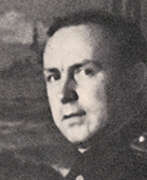

Alexander Alekseevich Efimov (Russian: Александр Алексеевич Ефимов) was a Soviet artist of the mid-twentieth century. He is known as a battle painter, marinist and teacher.
Alexander Efimov participated in the Great Patriotic War and the main theme of his work was the history of the navy. He actively worked in the studio of marinists of the fleet, in his work he used the techniques of oil painting and watercolor. His works, including the paintings "Leningradki", "Sailors in the battles for Budapest", "Northern Fleet", became famous for their historical significance.
Efimov's works are in museums and private collections not only in Russia but also abroad.
